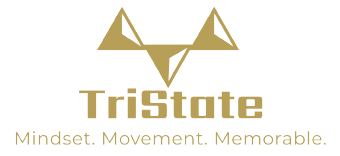Positive Language Cueing: How to Coach for Confidence
One of the biggest shifts I made in my coaching was realizing that most athletes already know what they’re doing wrong. What they really need is help finding how to fix it—and confidence that they can. Early in my career, I used to focus on symptoms of the errors. I’d say things like “don’t throw your hips” or “don’t swing the bar.” Now, I flip that. I tell them what I want to see. “Squeeze the bar into your hips.” “Drive vertically.” That shift—from correction to direction—changed everything.
Positive cueing isn’t about sugarcoating. It’s about using language that builds movement awareness without breaking an athlete’s focus—or their confidence. When we coach with intention and speak to the outcome we want, not the one we’re trying to avoid, we help athletes stay present, feel supported, and actually improve faster. Coaching is communication, and good communication builds belief.
What Positive Cueing Looks Like
Old cue: “Don’t throw your hips into the bar.”
New cue: “Squeeze the bar into your hips and drive vertically.”
It’s a small change, but it matters. In this example, I used to only coach the outcome—hip contact—without addressing what caused it. By shifting to what I wanted to see, I created space for the athlete to correct the root issue, not just the symptom.







Athletes Don’t Need Volume, They Need Clarity
I’ve worked with athletes who’ve come from coaches with a completely different style—more words, more feedback, more instruction. And I’ve had athletes comment that I don’t talk much during a first session. That’s intentional. I’m watching. I’m assessing. I want to know what one cue will make the biggest impact. If I can change three or four movement issues with one phrase, that’s a win.
Under Pressure, They Hear Your Voice
In the middle of a clean, during the drive of a jerk, under a heavy snatch—what do athletes hear? Ideally, they hear your voice. I know when I lift, all I hear is my coach. That means the words you use in training matter on the platform. Repetition, consistency, and tone—all of it gets stored and shows up in high-pressure moments.
How We Teach Our Coaches to Communicate
In our mentorship program, we break coaching down into two big ideas:
What are we identifying?
How are we addressing it?
It’s not enough to call out a mistake—we need to communicate in a way that makes sense to the athlete. I encourage our coaches to ask after a rep:
“What did you feel?”
“What did you hear me say?”
Because sometimes, what we say and what the athlete hears aren’t the same—and that’s on us to adjust.
The Power of Athlete Mantras
When I want to help an athlete anchor their mindset and trust themselves, I ask them to build a personal mantra:
“Pick two things you’ll say to yourself before you touch the bar.”
This does more than clean up technique—it gives athletes ownership, mental focus, and a consistent internal language that travels with them from training to competition.
Start shifting your cues from correction to creation. Instead of “don’t,” try “do.” Replace breakdown language with build-up language. Focus on the movement you want, not the mistake you’re trying to avoid. And most of all—listen to your athletes. Their feedback, their mantras, their responses are your roadmap.
This week, pick one cue you use all the time and rewrite it positively. Use it in a session and watch how your athlete responds. Then ask them: What did you hear? If you’re not sure how to word it, send it my way—I’ll help you reframe it.
